Neuro Design | Online Workshop | English | North-South Americas
Description:
The workshop explores different ideas of a 'neuro-environments' consists of lectures from distinguished scientists and designers exploring ideas at the intersection of neuroscience and design. The workshop offers two different approaches to thinking about the neuro-environment as described below.
1st workshop - Awakening to the Environment
This will be an introduction for the relationship between human beings and their environment. In order to design more human-centered environments, it is first necessary to have a self-perception of how environments impact us. The main goal of this workshop is to identify the environment, the activity performed on it, and the quality of the lived experiences, their well-being, and possible feelings triggered during this process, identifying the perception of the environment based on 7 environmental variables: COLORS, AROMAS, SOUNDS, SHAPES, BIOPHILIA, LIGHTING AND TEMPERATURE, PERSONALIZATION: FUNCTIONAL NEEDS (USABILITY) using a tool ESS (SELF-PERCEPTION ENVIRONMENTAL SCALE) to identify through the awakening of sensations, emotions, and perceptions the impact of the environment, be it positive, neutral or negative. The results can help us to focus on project solutions in a more assertive way.
2nd Workshop - Neural Networks
The first part of this workshop will overview the existing points of overlap between neuroscience and architecture, where interdisciplinary research has started to prove the benefits of a mind-oriented approach to design. The second part will look at the development of artificial neural networks as a tool for creativity, analyzing available open-source neural networks and a hands-on showcase of how to use them. The goal of this part is to understand how artificial intelligence can be currently applied to architectural design and experiment with text-to-image generative models. The third and last part will combine the previously exposed material to discuss the changing role of the architect: How are we going to use these tools in the future? How can architects remain relevant to the development of automated design? What does architecture need to accommodate to be part of shaping the world we will live in? By the end of this workshop, you will be able to: 1- identify what is currently being developed with neuroscience applied to architecture, 2- incorporate basic synthetic neural networks to your creative process and research, and 3- recognize the projected potential of expanding the current architectural skillset.
Key Words:
neuroscience,neural networks,body-perception,artificial intelligence
Required Skills:
none
Required Software:
Google Collab. (for the 2nd Workshop)
Required Hardware:
Working laptop or computer
Maximum number of participating students:
unlimited
1st workshop - Awakening to the Environment
This will be an introduction for the relationship between human beings and their environment. In order to design more human-centered environments, it is first necessary to have a self-perception of how environments impact us. The main goal of this workshop is to identify the environment, the activity performed on it, and the quality of the lived experiences, their well-being, and possible feelings triggered during this process, identifying the perception of the environment based on 7 environmental variables: COLORS, AROMAS, SOUNDS, SHAPES, BIOPHILIA, LIGHTING AND TEMPERATURE, PERSONALIZATION: FUNCTIONAL NEEDS (USABILITY) using a tool ESS (SELF-PERCEPTION ENVIRONMENTAL SCALE) to identify through the awakening of sensations, emotions, and perceptions the impact of the environment, be it positive, neutral or negative. The results can help us to focus on project solutions in a more assertive way.
2nd Workshop - Neural Networks
The first part of this workshop will overview the existing points of overlap between neuroscience and architecture, where interdisciplinary research has started to prove the benefits of a mind-oriented approach to design. The second part will look at the development of artificial neural networks as a tool for creativity, analyzing available open-source neural networks and a hands-on showcase of how to use them. The goal of this part is to understand how artificial intelligence can be currently applied to architectural design and experiment with text-to-image generative models. The third and last part will combine the previously exposed material to discuss the changing role of the architect: How are we going to use these tools in the future? How can architects remain relevant to the development of automated design? What does architecture need to accommodate to be part of shaping the world we will live in? By the end of this workshop, you will be able to: 1- identify what is currently being developed with neuroscience applied to architecture, 2- incorporate basic synthetic neural networks to your creative process and research, and 3- recognize the projected potential of expanding the current architectural skillset.
Schedule:
Jun 26 - Jul 2
-
Day 1 / Jun 26
-
Day 2 / Jun 27
-
Day 3 / Jun 28
-
Day 4 / Jun 29
-
Day 5 / Jun 30
-
Day 6 / Jul 1
-
Day 7 / Jul 2
Instructors:
-
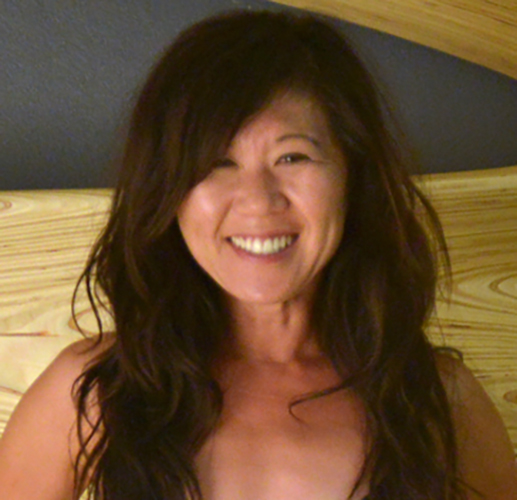 Kristine Mun ANFA - Academy of Neuroscience for Architecture ,.Dr. Kristine Mun is an architect, designer and professor of architecture. She was the former Head of Neuroscience for Architecture Certificate program at the NewSchool of Architecture & Design and is currently the Design & Development Strategist of ANFA, the Academy of Neuroscience for Architecture, at the Salk Institute. Her practice operates in three branches that focus on different scales and systems, from architecture and landscape, to installations and exhibitions, to sensory systems towards holistic designs. Embracing conventional techniques with new digital technologies, she cross-blends her practice with theory, research, and application towards creating “Empathic Architecture - Architecture that Feels”. She has exhibited her work widely, including Venice Biennale, Beijing Biennale, and has curated and organized several international exhibitions and conferences. She is the recent recipient of the SOM Research Foundation Grant to “Humanize High Density” that explores incorporating neuroscientific methods for designing cities. She holds a PhD from the Architectural Association in London and a Master of Architecture from Cranbrook Academy of Art.
Kristine Mun ANFA - Academy of Neuroscience for Architecture ,.Dr. Kristine Mun is an architect, designer and professor of architecture. She was the former Head of Neuroscience for Architecture Certificate program at the NewSchool of Architecture & Design and is currently the Design & Development Strategist of ANFA, the Academy of Neuroscience for Architecture, at the Salk Institute. Her practice operates in three branches that focus on different scales and systems, from architecture and landscape, to installations and exhibitions, to sensory systems towards holistic designs. Embracing conventional techniques with new digital technologies, she cross-blends her practice with theory, research, and application towards creating “Empathic Architecture - Architecture that Feels”. She has exhibited her work widely, including Venice Biennale, Beijing Biennale, and has curated and organized several international exhibitions and conferences. She is the recent recipient of the SOM Research Foundation Grant to “Humanize High Density” that explores incorporating neuroscientific methods for designing cities. She holds a PhD from the Architectural Association in London and a Master of Architecture from Cranbrook Academy of Art. -
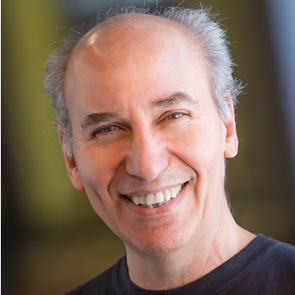 David Kirsh UC San Diego,ProfessorDr. David Kirsh is Professor and past chair of the Department of Cognitive Science at UCSD and current president of the Academy of Neuroscience for Architecture. From 2017-19 he was Leverhulme Visiting Professor at The Bartlett School of Architecture Univ College London and he continues there as Visiting Prof. He was educated at Oxford University (D.Phil), did post-doctoral research at MIT in the Artificial Intelligence Lab, and has held research or visiting professor positions at MIT and Stanford University. He has written extensively on situated and distributed cognition, and especially on how the environment can be shaped to simplify and extend cognition, including how we intelligently use space, and how we use external representations as an interactive tool for thought. He runs the Interactive Cognition Lab at UCSD where the focus is on the way humans are closely coupled to the outside world, and how human environments have been adapted to enable us to cope with the complexity of everyday life. Some recent projects focus on ways humans use their bodies as things to think with, specifically in dance making and choreographic cognition, how thought unfolds in many modalities, and how new digital and media tools are reshaping thought, especially in the different stages of design.
David Kirsh UC San Diego,ProfessorDr. David Kirsh is Professor and past chair of the Department of Cognitive Science at UCSD and current president of the Academy of Neuroscience for Architecture. From 2017-19 he was Leverhulme Visiting Professor at The Bartlett School of Architecture Univ College London and he continues there as Visiting Prof. He was educated at Oxford University (D.Phil), did post-doctoral research at MIT in the Artificial Intelligence Lab, and has held research or visiting professor positions at MIT and Stanford University. He has written extensively on situated and distributed cognition, and especially on how the environment can be shaped to simplify and extend cognition, including how we intelligently use space, and how we use external representations as an interactive tool for thought. He runs the Interactive Cognition Lab at UCSD where the focus is on the way humans are closely coupled to the outside world, and how human environments have been adapted to enable us to cope with the complexity of everyday life. Some recent projects focus on ways humans use their bodies as things to think with, specifically in dance making and choreographic cognition, how thought unfolds in many modalities, and how new digital and media tools are reshaping thought, especially in the different stages of design. -
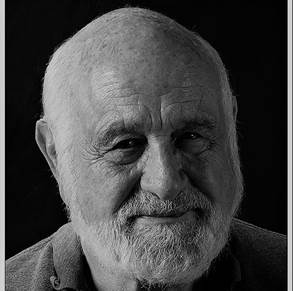 Michael Arbib USCD,ProfessorThe thrust of Michael Arbib’s work is expressed in the title of his first book, Brains, Machines and Mathematics: The brain is not a computer in the current technological sense, but he has based his career on the argument that we can learn much about machines from studying brains, and much about brains from studying machines. In addition to his research in artificial intelligence, brain theory and cognitive science, Arbib has been actively involved in theory of computation and system theory. His concern for the social implications of computer science was given textbook expression in Computers and the Cybernetic Society; while in 1983 he and Mary Hesse delivered the Gifford Lectures in Natural Theology at the University of Edinburgh, since published as The Construction of Reality, providing a coherent epistemology for both individual and social knowledge. His current research has two main foci, and he is currently constructing connections between them. One theme builds on a paper on language evolution published with Giacomo Rizzolatti called “Language in our Grasp.” This interest has since been developed in his book How the Brain Got Language: The Mirror System Hypothesis and in a number of ABLE workshops on the themes of Action, Brain, Language and Evolution. A highly edited proceedings volume for the latest Workshop was published as How the Brain Got Language: Towards a New Road Map by Johns Benjamins in 2020. The other theme can be described as Brains, Machines and Buildings, with a special interest in neuromorphic architecture in the sense of supplying buildings with “brains” whose design is informed by computational neuroscience. His recent writings also include articles on the neuroscience of design and of the experience of architecture, and he has presented talks on the architecture-neuroscience conversation around the world. His new book, When Brains Meet Buildings: A Conversation Between Neuroscience and Architecture, will be published by Oxford University Press in August of 2021.
Michael Arbib USCD,ProfessorThe thrust of Michael Arbib’s work is expressed in the title of his first book, Brains, Machines and Mathematics: The brain is not a computer in the current technological sense, but he has based his career on the argument that we can learn much about machines from studying brains, and much about brains from studying machines. In addition to his research in artificial intelligence, brain theory and cognitive science, Arbib has been actively involved in theory of computation and system theory. His concern for the social implications of computer science was given textbook expression in Computers and the Cybernetic Society; while in 1983 he and Mary Hesse delivered the Gifford Lectures in Natural Theology at the University of Edinburgh, since published as The Construction of Reality, providing a coherent epistemology for both individual and social knowledge. His current research has two main foci, and he is currently constructing connections between them. One theme builds on a paper on language evolution published with Giacomo Rizzolatti called “Language in our Grasp.” This interest has since been developed in his book How the Brain Got Language: The Mirror System Hypothesis and in a number of ABLE workshops on the themes of Action, Brain, Language and Evolution. A highly edited proceedings volume for the latest Workshop was published as How the Brain Got Language: Towards a New Road Map by Johns Benjamins in 2020. The other theme can be described as Brains, Machines and Buildings, with a special interest in neuromorphic architecture in the sense of supplying buildings with “brains” whose design is informed by computational neuroscience. His recent writings also include articles on the neuroscience of design and of the experience of architecture, and he has presented talks on the architecture-neuroscience conversation around the world. His new book, When Brains Meet Buildings: A Conversation Between Neuroscience and Architecture, will be published by Oxford University Press in August of 2021. -
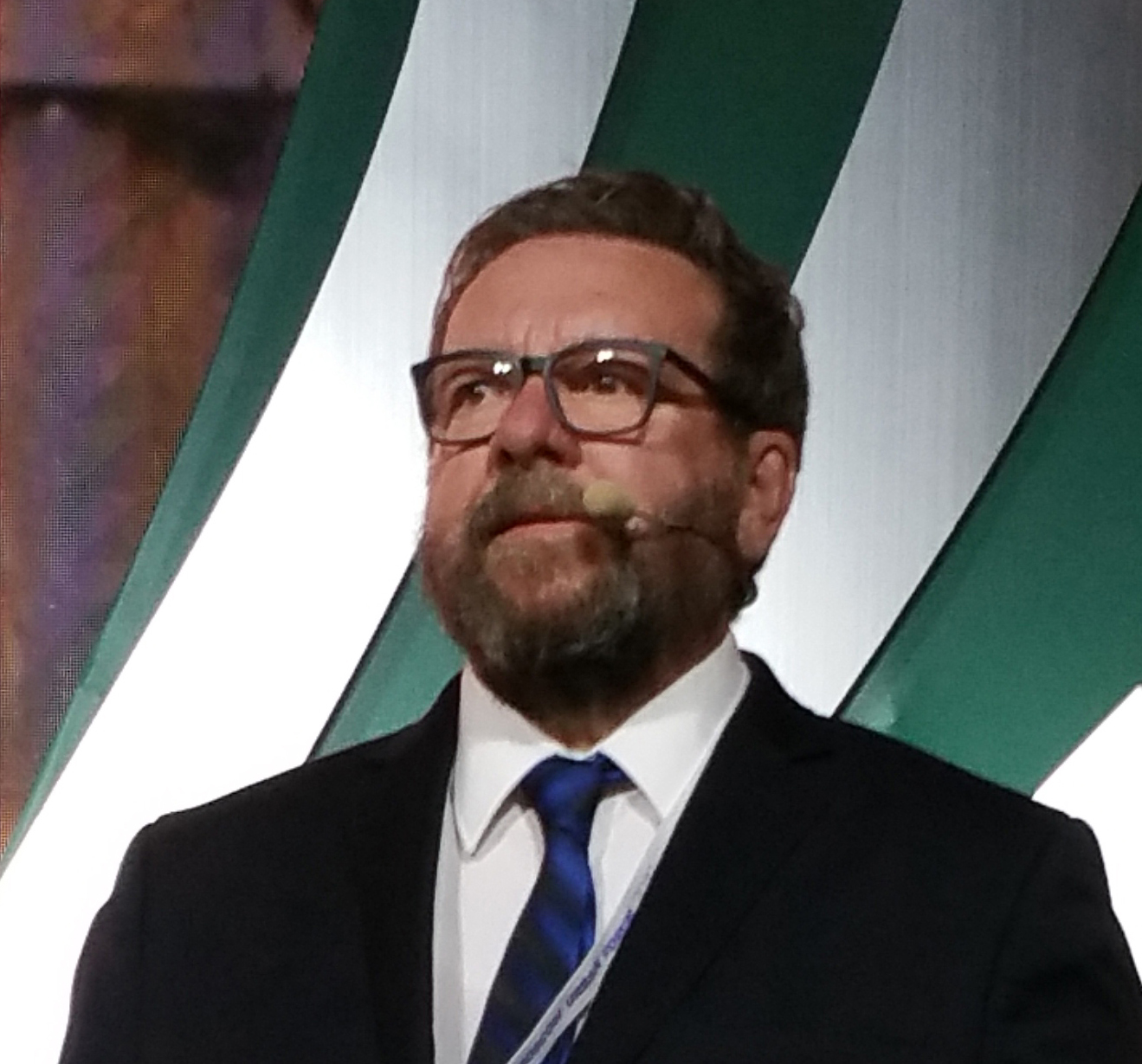 Colin Ellard University of Waterloo ,ProfessorColin Ellard is a cognitive neuroscientist at the University of Waterloo and director of its Urban Realities Laboratory. Ellard works at the intersection of urban design and experimental psychology. He is a practising scientist but he also works in collaboration and partnership with architects, museums and other NGOs on projects meant to enrich public dialogue about the built environment. He is a member of the advisory committee for the Academy of Neuroscience for Architecture, an Urban Design and Mental Health Fellow, and a Salzburg Global Fellow. Ellard’s most recent book is Places of the Heart (Bellevue Literary Press, 2015).
Colin Ellard University of Waterloo ,ProfessorColin Ellard is a cognitive neuroscientist at the University of Waterloo and director of its Urban Realities Laboratory. Ellard works at the intersection of urban design and experimental psychology. He is a practising scientist but he also works in collaboration and partnership with architects, museums and other NGOs on projects meant to enrich public dialogue about the built environment. He is a member of the advisory committee for the Academy of Neuroscience for Architecture, an Urban Design and Mental Health Fellow, and a Salzburg Global Fellow. Ellard’s most recent book is Places of the Heart (Bellevue Literary Press, 2015). -
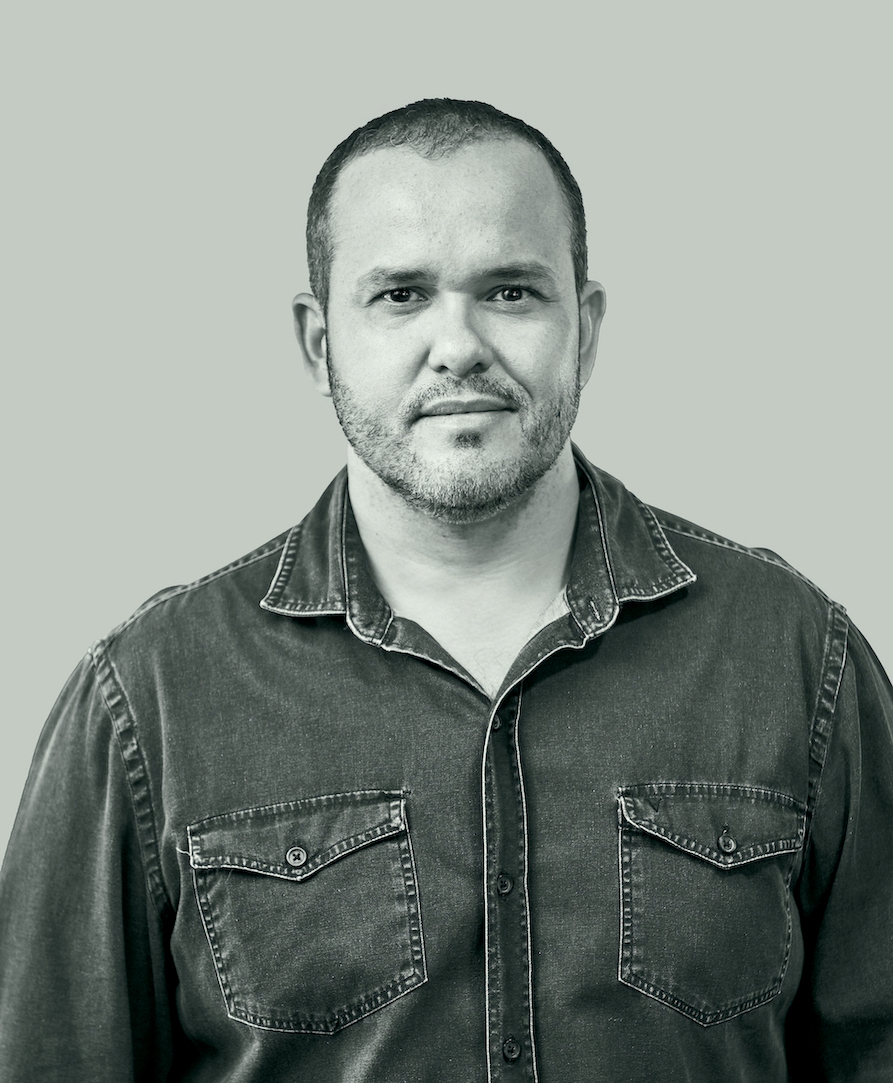 Lorí Crízel IPOG Post-Graduate Institute,Coordinator of Post-Graduate Studies in Neuroscience applied to ArchitectureAuthor of the first book in Brazil about Neuroscience applied to Architecture, Design and Lighting | Member of the ANFA Center for Education Latin America of The Academy of Neuroscience for Architecture - ANFA | Architect and Urban Planner | Master in Environmental Comfort | Specialist in Neurosciences and Human Behavior | Professor in the Architecture and Urbanism Courses | Professor and Coordinator of Post-Graduate Studies in Architecture, Neuroscience applied to Architecture, BIM, Design, and Lighting, as well as the International Programs Coordinator of the Graduate and Undergraduate Institute IPOG/Brazil | Holder of the CREA/PR Label of Excellence in Architectural Design | International Certifications of Design Thinking and Light Design by POLI.Design Instituto Politecnico di Milano (Italy) | Professional/Academic immersion activities in the offices of Norman Foster (London), Zaha Hadid (London), Christian de Portzamparc (Paris), BIG (Copenhagen), Effekt Architects (Copenhagen), Concrete Architects (Amsterdam), Aires Mateus (Lisbon), Hassell Studio (Singapore), AEDAS Architecture (Singapore), Architects 61 (Singapore), Design Link Architects (Singapore), Tandem Architects (Bangkok), DBALP Jam Factory (Bangkok), X Architects (Dubai) | Institutional Activities with POLI.Design by Instituto Politecnico di Milano (Italy), McGill University (Canada) and University of Porto (Portugal). Website: www.loricrizel.arq.br/en/ | Instagram: @lori.crizel
Lorí Crízel IPOG Post-Graduate Institute,Coordinator of Post-Graduate Studies in Neuroscience applied to ArchitectureAuthor of the first book in Brazil about Neuroscience applied to Architecture, Design and Lighting | Member of the ANFA Center for Education Latin America of The Academy of Neuroscience for Architecture - ANFA | Architect and Urban Planner | Master in Environmental Comfort | Specialist in Neurosciences and Human Behavior | Professor in the Architecture and Urbanism Courses | Professor and Coordinator of Post-Graduate Studies in Architecture, Neuroscience applied to Architecture, BIM, Design, and Lighting, as well as the International Programs Coordinator of the Graduate and Undergraduate Institute IPOG/Brazil | Holder of the CREA/PR Label of Excellence in Architectural Design | International Certifications of Design Thinking and Light Design by POLI.Design Instituto Politecnico di Milano (Italy) | Professional/Academic immersion activities in the offices of Norman Foster (London), Zaha Hadid (London), Christian de Portzamparc (Paris), BIG (Copenhagen), Effekt Architects (Copenhagen), Concrete Architects (Amsterdam), Aires Mateus (Lisbon), Hassell Studio (Singapore), AEDAS Architecture (Singapore), Architects 61 (Singapore), Design Link Architects (Singapore), Tandem Architects (Bangkok), DBALP Jam Factory (Bangkok), X Architects (Dubai) | Institutional Activities with POLI.Design by Instituto Politecnico di Milano (Italy), McGill University (Canada) and University of Porto (Portugal). Website: www.loricrizel.arq.br/en/ | Instagram: @lori.crizel -
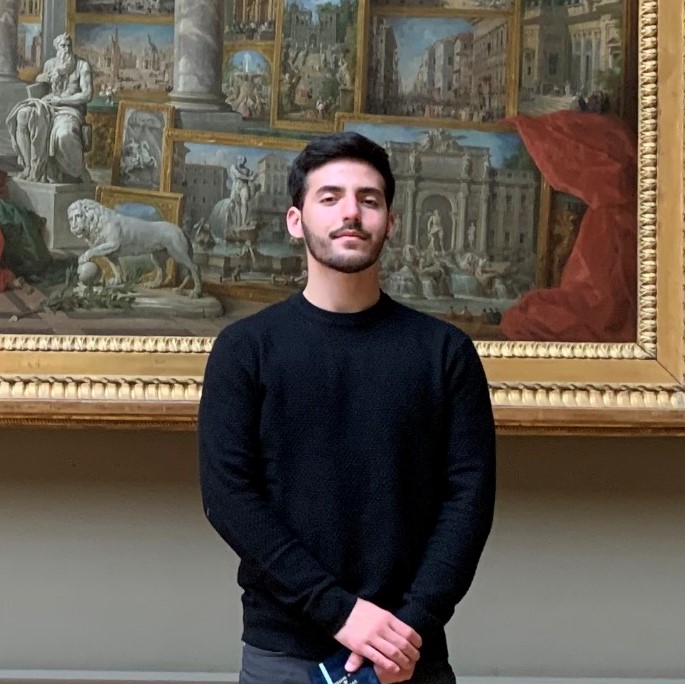 Matheus Stancati Sunken Blimp,Co-FounderMatheus is originally from the rural town of Tatui, in Brazil. In 2016, he moved to the United States to seek his M.Arch at Florida International University. In 2018, Matheus joined the Robotics and Digital Fabrication lab to explore ceramic additive manufacturing techniques using industrial robotic arms. In the following year, he received a position as a Research Assistant under a grant from the National Science Foundation, where he participated in the development of the Robotics Academy, in Miami. This initiative aimed to prepare the current construction workforce for the upcoming normalization of robotic construction techniques. In 2020, Matheus received the AIA Student of the Year award and began his master's thesis research under professor Neil Leach and Marina Rodriguez das Neves, studying the neuroscientific presence in architectural discourse and the design applications for artificial neural networks. In 2021, he graduated with a Master's in Architecture and received the 2021 Super Jury award, Master Thesis Award, and the Award for Academic Excellence. In May, he then co-founded Sunken Blimp, an exploratory studio focused on interdisciplinary approaches to architectural design, collaborating with Neuroscientists, Electrical, Mechanical, and Software Engineers.
Matheus Stancati Sunken Blimp,Co-FounderMatheus is originally from the rural town of Tatui, in Brazil. In 2016, he moved to the United States to seek his M.Arch at Florida International University. In 2018, Matheus joined the Robotics and Digital Fabrication lab to explore ceramic additive manufacturing techniques using industrial robotic arms. In the following year, he received a position as a Research Assistant under a grant from the National Science Foundation, where he participated in the development of the Robotics Academy, in Miami. This initiative aimed to prepare the current construction workforce for the upcoming normalization of robotic construction techniques. In 2020, Matheus received the AIA Student of the Year award and began his master's thesis research under professor Neil Leach and Marina Rodriguez das Neves, studying the neuroscientific presence in architectural discourse and the design applications for artificial neural networks. In 2021, he graduated with a Master's in Architecture and received the 2021 Super Jury award, Master Thesis Award, and the Award for Academic Excellence. In May, he then co-founded Sunken Blimp, an exploratory studio focused on interdisciplinary approaches to architectural design, collaborating with Neuroscientists, Electrical, Mechanical, and Software Engineers. -
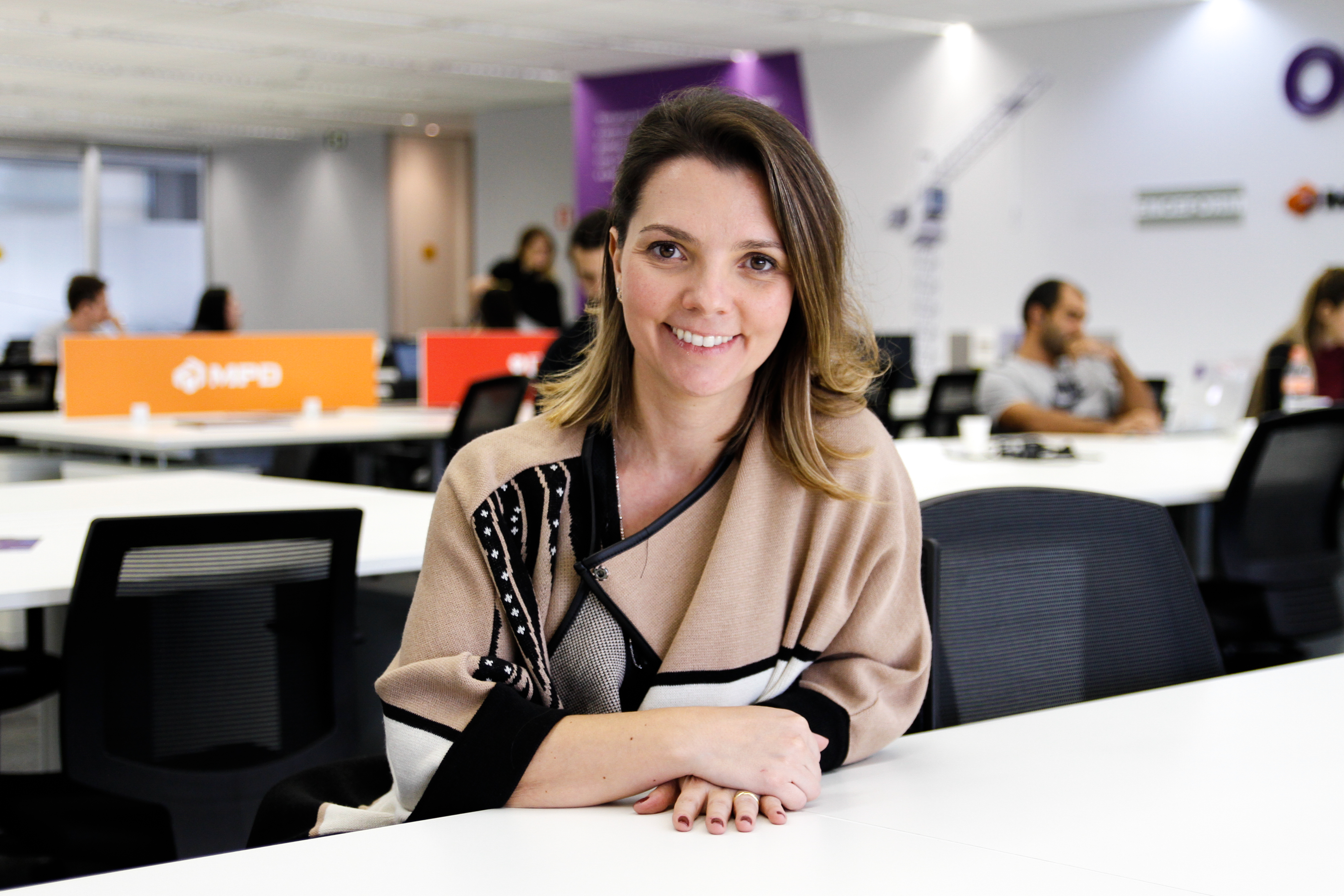 Gabriela Sartori NEUROARQ Academy,Co-FounderCertified in Neuroscience and Architecture, Design and Urbanism (Newschool, USA). Architect and urban planner, also graduated in social communication, postgraduate student in commercial architecture at Senac / SP. For many years she has developed set designs for television, events, and theater, a way to follow her purpose of inspiring people. The career path had changed, but the purpose of inspiring remained, and with the personal pursuit of neuroscience, behavior, and consciousness intensified. Today she is the head of the Sartori Design office in São Paulo, with a very human and individualized focus on corporate and residential projects. Co-founder of NEUROARQ Academy (Brazilian Academy of Neuroscience and Architecture) in partnership with architect Priscilla Bencke, which aims to empower professionals, disseminate knowledge, integrate diverse areas into a systemic view of space and behavior. Email: gabi@neuro.arq.br Website: www.neuro.arq.br
Gabriela Sartori NEUROARQ Academy,Co-FounderCertified in Neuroscience and Architecture, Design and Urbanism (Newschool, USA). Architect and urban planner, also graduated in social communication, postgraduate student in commercial architecture at Senac / SP. For many years she has developed set designs for television, events, and theater, a way to follow her purpose of inspiring people. The career path had changed, but the purpose of inspiring remained, and with the personal pursuit of neuroscience, behavior, and consciousness intensified. Today she is the head of the Sartori Design office in São Paulo, with a very human and individualized focus on corporate and residential projects. Co-founder of NEUROARQ Academy (Brazilian Academy of Neuroscience and Architecture) in partnership with architect Priscilla Bencke, which aims to empower professionals, disseminate knowledge, integrate diverse areas into a systemic view of space and behavior. Email: gabi@neuro.arq.br Website: www.neuro.arq.br -
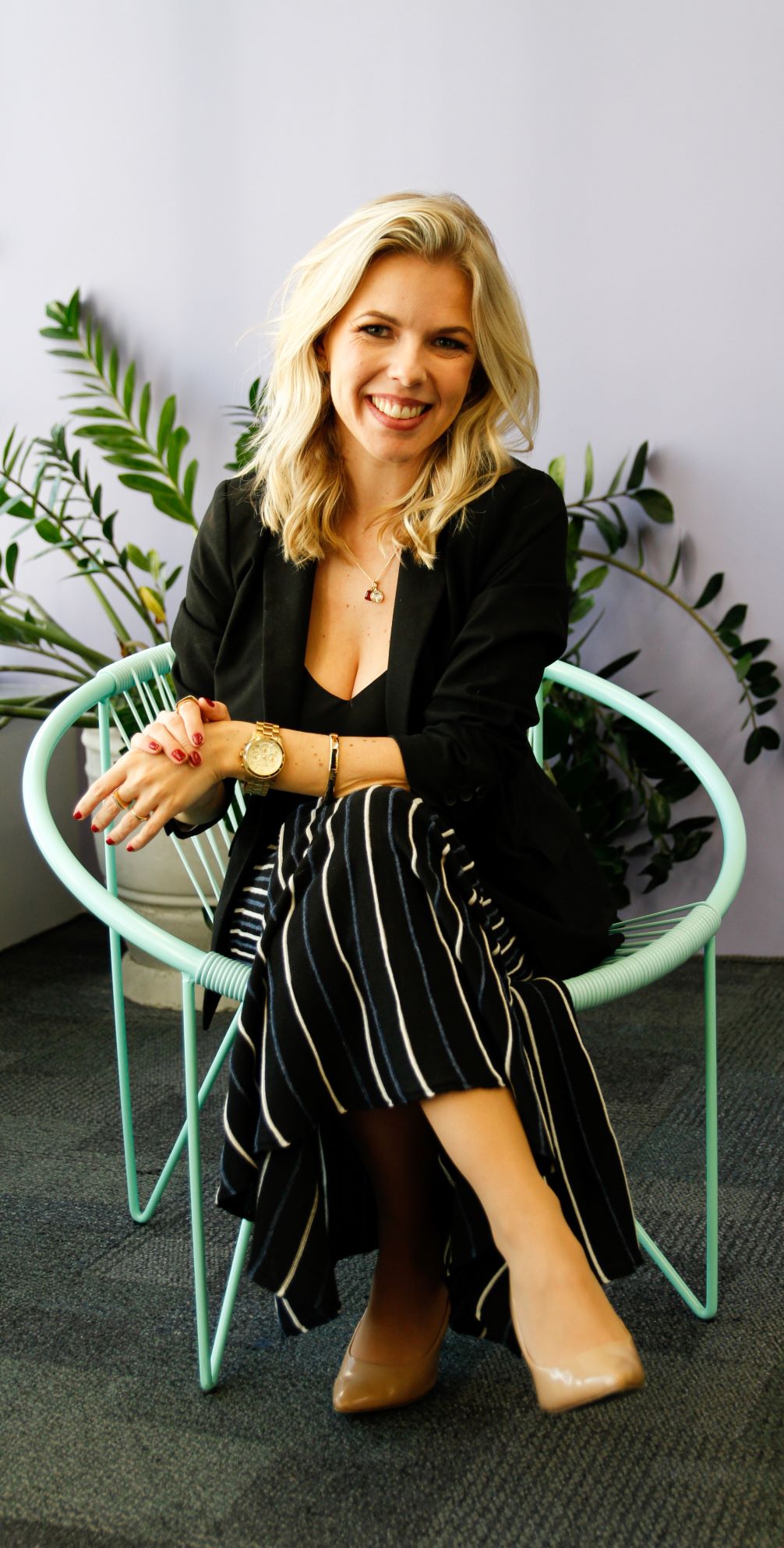 Priscilla Bencke NEUROARQ Academy,Co-FounderCertified in Neuroscience and Architecture, Design and Urbanism (NewSchool, USA). Responsible for the training and consulting firm QUALIDADE CORPORATIVA Smart Workplaces. Graduated in architecture, postgraduate in interior design, postgraduate in Neuroscience and Behavior. Workplace Design specialist from German School Mensch & Büro Akademie and Quality Office Consultant. Co-authored the book "Stress and Quality of Working Life: Finding Meaning in Grief and Suffering" which was published in the United States. Priscilla believes in productivity through environments that promote well-being and quality of life. She is also a TEDx speaker "Better than coffee: productivity and your workplace". Co-founder of NEUROARQ Academy (Brazilian Academy of Neuroscience and Architecture) in partnership with architect Gabi Sartori, which aims to empower professionals, disseminate knowledge, integrate diverse areas into a systemic view of space and behavior. Email: pri@neuro.arq.br Website: www.neuro.arq.br
Priscilla Bencke NEUROARQ Academy,Co-FounderCertified in Neuroscience and Architecture, Design and Urbanism (NewSchool, USA). Responsible for the training and consulting firm QUALIDADE CORPORATIVA Smart Workplaces. Graduated in architecture, postgraduate in interior design, postgraduate in Neuroscience and Behavior. Workplace Design specialist from German School Mensch & Büro Akademie and Quality Office Consultant. Co-authored the book "Stress and Quality of Working Life: Finding Meaning in Grief and Suffering" which was published in the United States. Priscilla believes in productivity through environments that promote well-being and quality of life. She is also a TEDx speaker "Better than coffee: productivity and your workplace". Co-founder of NEUROARQ Academy (Brazilian Academy of Neuroscience and Architecture) in partnership with architect Gabi Sartori, which aims to empower professionals, disseminate knowledge, integrate diverse areas into a systemic view of space and behavior. Email: pri@neuro.arq.br Website: www.neuro.arq.br -
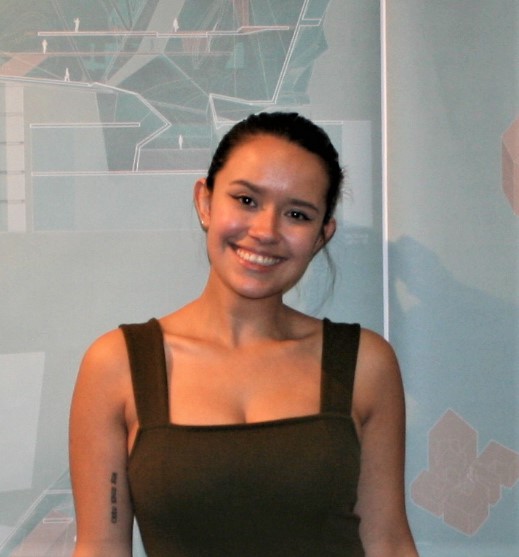 Ligia Filgueiras FIU,Teaching AssistantLigia Filgueiras is an architectural designer and researcher. She is a recent graduate from Florida International University (2021) in Miami, holding a Masters of Architecture degree (M.Arch). During her time in the university, she was awarded a Graduate Research Fellowship from FIU’s Center of Research Excellence in Science and Technology (CREST), supported by the National Science Foundation (NSF). For this data-driven research, she developed comprehensive and interactive visualization methods that applied to various water quality sensing efforts undertaken by CREST researchers. Additionally, her master thesis research was focused on the intersection between emerging automated technologies and architectural education.
Ligia Filgueiras FIU,Teaching AssistantLigia Filgueiras is an architectural designer and researcher. She is a recent graduate from Florida International University (2021) in Miami, holding a Masters of Architecture degree (M.Arch). During her time in the university, she was awarded a Graduate Research Fellowship from FIU’s Center of Research Excellence in Science and Technology (CREST), supported by the National Science Foundation (NSF). For this data-driven research, she developed comprehensive and interactive visualization methods that applied to various water quality sensing efforts undertaken by CREST researchers. Additionally, her master thesis research was focused on the intersection between emerging automated technologies and architectural education.